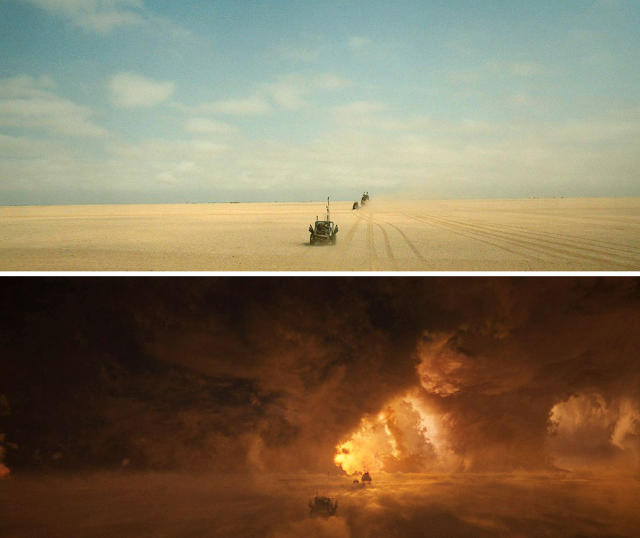This is how director George Miller helped create the new standard-bearer in kickass, high-octane action movies: with lots and lots of CGI.
The No. 1 question people walk away from Mad Max: Fury Road asking themselves is: “Would it be weird if I went as Imperator Furiosa for Halloween every year going forward?” A close second question, though, is: “How did they even make this movie? Everything I just saw looks impossible.” Indeed the non-stop, flame-engulfed, metal-crunching carnage on display in Fury Road looks so seamless and is so effective, it seems to have come straight from some kind of inter-dimensional pipeline directly into director George Miller’s dreams. Of course, in reality, it was a masterfully coordinated effort from a talented team, and now we have new insight into how they actually made it happen.

Fx Guide has just released a staggering breakdown of visual effects from the film, which reveals how CGI was used to enhance several shots. The article features a lengthy interview with VFX supervisor Andrew Jackson, along with, awesomely, a motherlode of before-and-after images, that show how much the film further came together after it’s grueling half-year shoot in the Namibian desert.
While much of the legendary action in Mad Max—seriously, people will be talking about this movie all year—comes from impeccably staged chase scenes, the sheen of whiz-bang pyrotechnics enveloping it is the product of more than 2,000 visual effects shots. (Avatar, in comparison, had about 1,800.) These effects produce changes in overall coloring, background geography, number of extras, and the insertion of lots and lots of billowing explosion-fire. Together, the staging and the CGI achieves a bludgeoning effect that makes most action flicks seem like Andrew Bujalski movies in comparison.
Have a look at the slides above to see more side-by-side comparisons.
Fast Company , Read Full Story
(178)